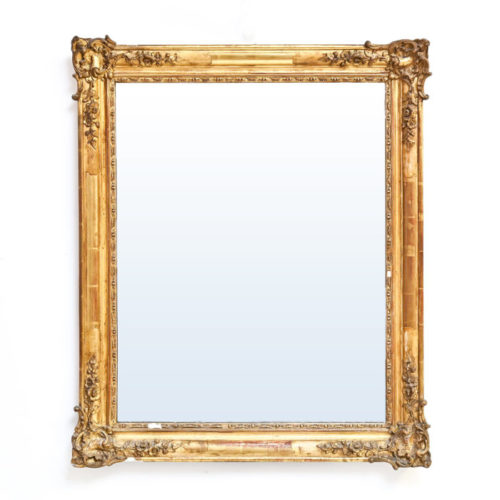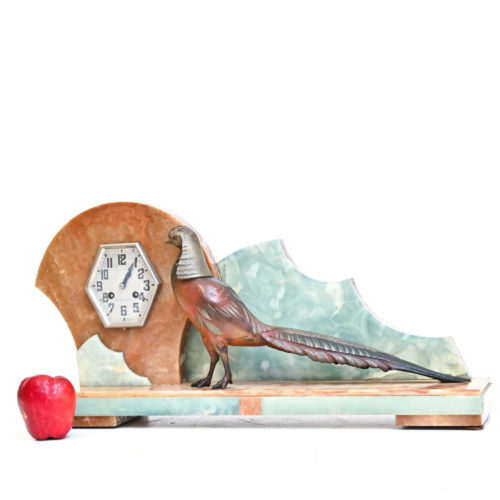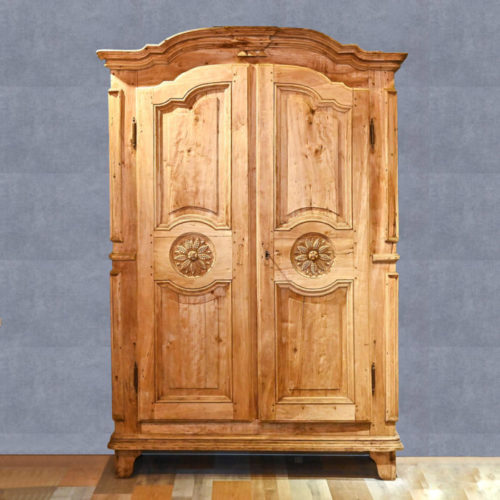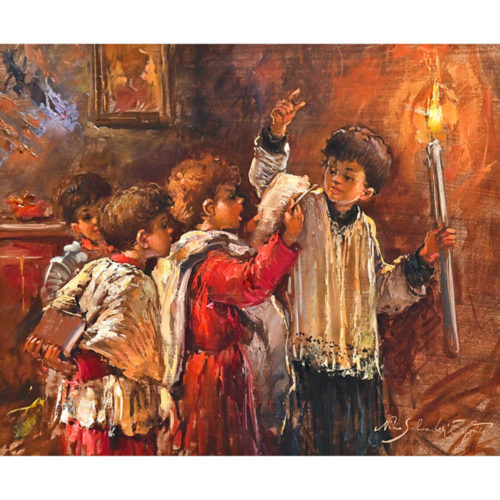-
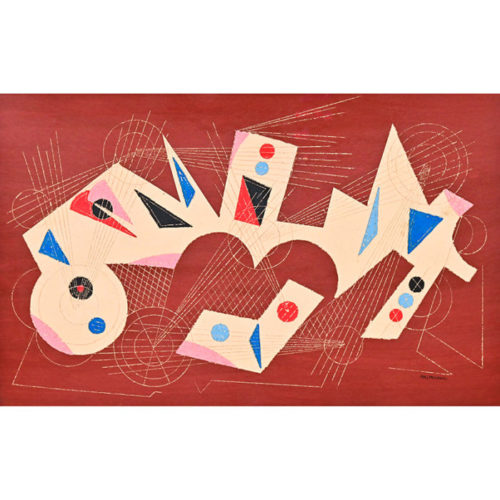 "Composition" by Umberto Mastroianni (Fontana Liri 1910 - Marino 1998), mixed technique / cardboard signed on the lower right, work number 0019. Authentication of the artist on photo. Umberto Mastroianni was born in Fontana Liri, in the province of Frosinone, on 21 September 1910. After his studies at the Academy of San Marcello in Rome, he moved with his family to Turin, continuing his training under the guidance of the master Guerrisi. His first works have a futurist imprinting; in particular he will be influenced by the works of Boccioni which Mastroianni tinges with neo-Cubism. The artist will be the founder of the Turin Prize in 1947 and, during his life, will receive important awards such as the International Grand Prize for Sculpture (Venice Biennale 1958) and the Tokyo Imperial Prize (1989). World famous artist, Umberto Mastroianni died on February 25, 1998 in his house-museum in Marino (Rome), leaving many masterpieces to posterity. Measurements: In frame H 77.5 x W 93.5 cm x D 5.5 / Canvas H 48.5 x W 65.5 cm
"Composition" by Umberto Mastroianni (Fontana Liri 1910 - Marino 1998), mixed technique / cardboard signed on the lower right, work number 0019. Authentication of the artist on photo. Umberto Mastroianni was born in Fontana Liri, in the province of Frosinone, on 21 September 1910. After his studies at the Academy of San Marcello in Rome, he moved with his family to Turin, continuing his training under the guidance of the master Guerrisi. His first works have a futurist imprinting; in particular he will be influenced by the works of Boccioni which Mastroianni tinges with neo-Cubism. The artist will be the founder of the Turin Prize in 1947 and, during his life, will receive important awards such as the International Grand Prize for Sculpture (Venice Biennale 1958) and the Tokyo Imperial Prize (1989). World famous artist, Umberto Mastroianni died on February 25, 1998 in his house-museum in Marino (Rome), leaving many masterpieces to posterity. Measurements: In frame H 77.5 x W 93.5 cm x D 5.5 / Canvas H 48.5 x W 65.5 cm -
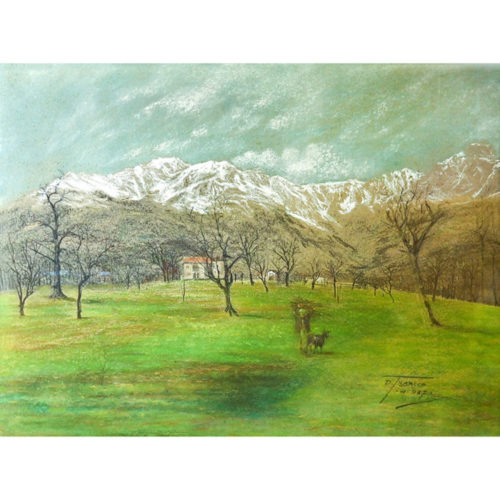 "Biella mountains seen from the Campra plateau" (Graglia) pastel on cardboard by Demetrio Tabacco. Work of March 1937, signed and dated on the lower right. Demetrio Tabacco (Turin 1886 -?) spent some time in the studio of Tommaso Ruffo in Turin. He made his debut in Biella in 1921; he later exhibited his works in Turin, Vercelli, Novara and Tripoli. In this last city he had lived from 1916 to 1918, faithfully portraying types and aspects of environment and manners. He treated landscapes, but he preferred depicting figures. Period: March 1937 Measurements: In frame H 77.5 x W 93.5 cm x D 5.5 / Canvas H 48.5 x W 65.5 cm
"Biella mountains seen from the Campra plateau" (Graglia) pastel on cardboard by Demetrio Tabacco. Work of March 1937, signed and dated on the lower right. Demetrio Tabacco (Turin 1886 -?) spent some time in the studio of Tommaso Ruffo in Turin. He made his debut in Biella in 1921; he later exhibited his works in Turin, Vercelli, Novara and Tripoli. In this last city he had lived from 1916 to 1918, faithfully portraying types and aspects of environment and manners. He treated landscapes, but he preferred depicting figures. Period: March 1937 Measurements: In frame H 77.5 x W 93.5 cm x D 5.5 / Canvas H 48.5 x W 65.5 cm -
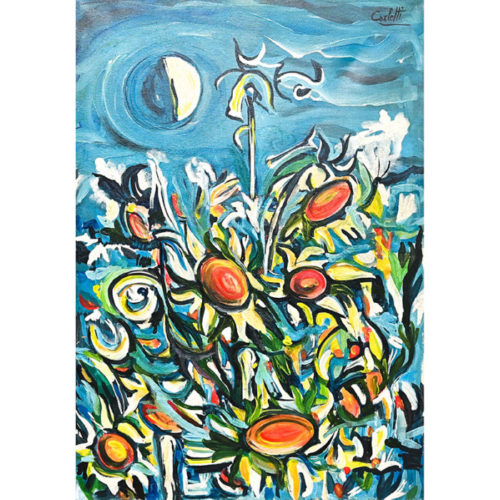 "Flowers and Moon" Oil on canvas by Mario Carletti from the 60s / 70s. Carletti Mario (Turin 1912 - Cossato 1977), a Piedmontese painter and engraver, he painted views, landscapes, portraits and works of sacred art. He exhibited at the Venice Biennale in 1942 and at the Rome Quadriennale in 1956. Period: 60s / 70s Measurements: H 100 x W 70 x D 2 cm
"Flowers and Moon" Oil on canvas by Mario Carletti from the 60s / 70s. Carletti Mario (Turin 1912 - Cossato 1977), a Piedmontese painter and engraver, he painted views, landscapes, portraits and works of sacred art. He exhibited at the Venice Biennale in 1942 and at the Rome Quadriennale in 1956. Period: 60s / 70s Measurements: H 100 x W 70 x D 2 cm -
Out of stock
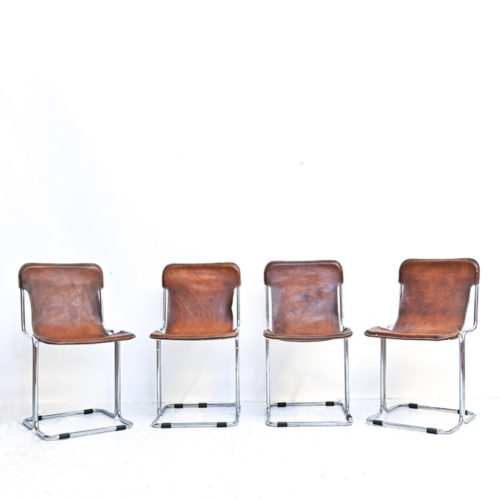 Group of 4 chairs by Antonio Ari Colombo in chromed iron and leather from the 1960s. The leather is in excellent condition, structures to be polished, two screws are missing. Period: 1960s Measurements: H 81 x W 44 x D 50 cm / H seat 46 cm
Group of 4 chairs by Antonio Ari Colombo in chromed iron and leather from the 1960s. The leather is in excellent condition, structures to be polished, two screws are missing. Period: 1960s Measurements: H 81 x W 44 x D 50 cm / H seat 46 cm -
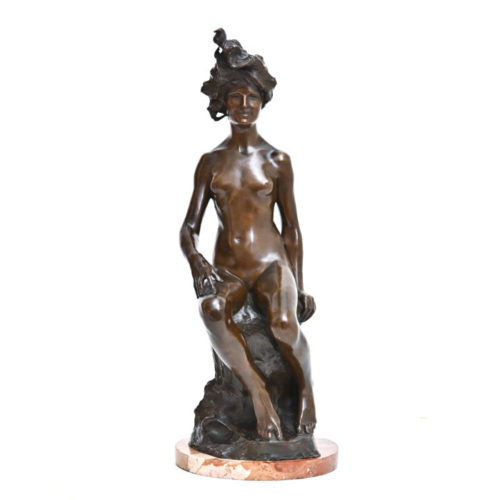 Bronze by Giovanni Nicolini, work of the 1920s / 1930s. Giovanni Nicolini was born in Palermo on April 14, 1872. He died in Rome in 1956. In the 1920s / 1930s the author focused his formal research on the theme of the nude figure, giving life to works strongly expressive of feelings or passions, in which the female figure with floating hair and enveloping shapes revealed a strong art nouveau influence. Period: 1920s / 30s Measurements: H with base 51 cm / H 49 x Ø base 19 cm
Bronze by Giovanni Nicolini, work of the 1920s / 1930s. Giovanni Nicolini was born in Palermo on April 14, 1872. He died in Rome in 1956. In the 1920s / 1930s the author focused his formal research on the theme of the nude figure, giving life to works strongly expressive of feelings or passions, in which the female figure with floating hair and enveloping shapes revealed a strong art nouveau influence. Period: 1920s / 30s Measurements: H with base 51 cm / H 49 x Ø base 19 cm -
Out of stock
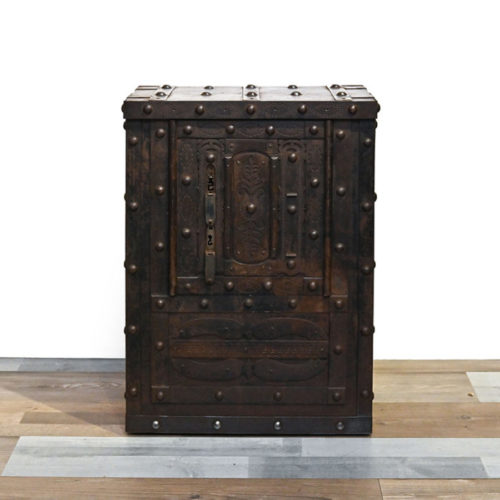 Piedmontese safe from the mid-19th century fully studded, with double lock. Inside there are two wooden drawers. In good condition. Period: Mid 19th century Measurements: H 76 x W 55.5 x D 32 cm
Piedmontese safe from the mid-19th century fully studded, with double lock. Inside there are two wooden drawers. In good condition. Period: Mid 19th century Measurements: H 76 x W 55.5 x D 32 cm -
Out of stock
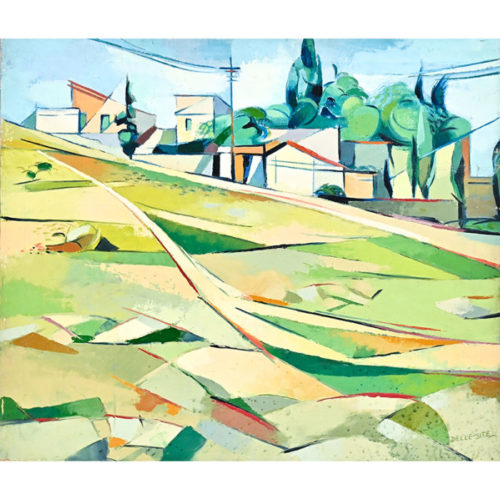 "Landscape on the Via Cassia" oil on canvas by Mino Delle Site. The work is signed at the bottom right Delle Site, listed in the catalog of the IV exhibition of figurative arts of Rome and Lazio, 1963, Galleria SPQR. On the back it has the gallery label. Mino Delle Site (Lecce 1914 - Rome 1996) had first studied in his city and then graduated from the Academy of Fine Arts in Rome. He took part to the Futurist Movement, from which he later broke away in search of new aesthetic expressions. He participated in the First Biennial of Palermo, the Second and Third Quadiennials of Rome and the Venice Biennials of 1934, 1936, 1938. In 1956 he presented in Rome an anthological exhibition summarizing twenty-five years of artistic activity; in 1957 he set up another solo exhibition in Rome, at the Aliberti Gallery; and he also participates in the VI, VII and VIII Roman Quadrennial. In 1965 he exhibited in the USA, at the Rizzoli Gallery in New York with a personal anthological exhibition, works from 1932 to 1965. He won numerous competitions and prizes: in 1936 a prize for Mural Painting; in 1946 a prize for the Female Nude; in 1950 a "Attic" award. He has made decorations and mosaics for public and private entities. His works can be found in both Italian and foreigner public and private collections. Period: 1963 Measurements: H 55 x W 65 x D 1.5 cm
"Landscape on the Via Cassia" oil on canvas by Mino Delle Site. The work is signed at the bottom right Delle Site, listed in the catalog of the IV exhibition of figurative arts of Rome and Lazio, 1963, Galleria SPQR. On the back it has the gallery label. Mino Delle Site (Lecce 1914 - Rome 1996) had first studied in his city and then graduated from the Academy of Fine Arts in Rome. He took part to the Futurist Movement, from which he later broke away in search of new aesthetic expressions. He participated in the First Biennial of Palermo, the Second and Third Quadiennials of Rome and the Venice Biennials of 1934, 1936, 1938. In 1956 he presented in Rome an anthological exhibition summarizing twenty-five years of artistic activity; in 1957 he set up another solo exhibition in Rome, at the Aliberti Gallery; and he also participates in the VI, VII and VIII Roman Quadrennial. In 1965 he exhibited in the USA, at the Rizzoli Gallery in New York with a personal anthological exhibition, works from 1932 to 1965. He won numerous competitions and prizes: in 1936 a prize for Mural Painting; in 1946 a prize for the Female Nude; in 1950 a "Attic" award. He has made decorations and mosaics for public and private entities. His works can be found in both Italian and foreigner public and private collections. Period: 1963 Measurements: H 55 x W 65 x D 1.5 cm -
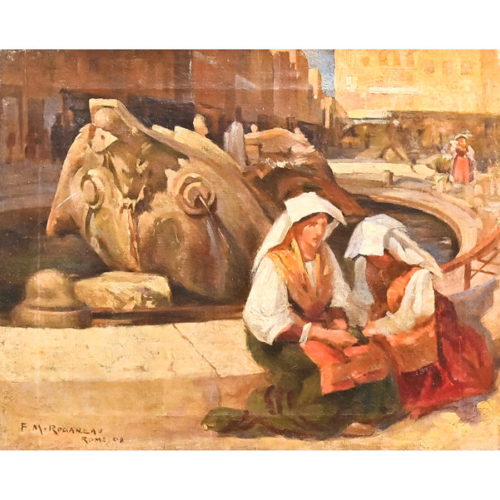 "Women in Piazza di Spagna, at the Fontana della Barcaccia, Rome" oil on canvas by the French painter François Maurice Roganeau. Work signed and dated F. M. Roganeau Rome 1908. Francis Maurice Roganeau (Bordeaux 1883 - Aix-en-Provence 1973) is a French painter, illustrator and sculptor. François-Maurice Roganeau was student of the renowned sculptors Gaston Veuvenot Leroux and Paul Quinsac at the School of Fine Arts in Bordeaux, then he went to study in Jean-Léon Gérôme's studio and later on with Gabriel Ferrier at the Beaux-Arts in Paris. He started with illustration and painting. As an illustrator, he mainly worked for the publisher Henri Laurens. In 1906 he won the first Grand Prix of Rome in painting and the second Grand Prix of sculpture. He exhibited at the 1912 Salon and received a medal for his he painting Le Soir, à la Rivière, inspired by one of André Chénier's Poésies antiques. In 1917 he was commissioned to repair the identical ceiling of the Grand Théâtre de Bordeaux, initially painted by Jean-Baptiste-Claude Robin. He also supplied colored glass boxes to the master glassmaker Gustave Pierre Dagrant, such as the one in the stained glass window of the church of Castillon-la-Bataille. He was director of the Bordeaux School of Fine Arts from 1929 to 1958. In 1932 he was made a Knight of the Legion of Honor. His latest works depict the Basque Country, its people and its landscapes. Period: 1908 Measurements: In frame h 54.5 x L 61.5 x D 6 / Canvas 28.5 x L 35.5 cm
"Women in Piazza di Spagna, at the Fontana della Barcaccia, Rome" oil on canvas by the French painter François Maurice Roganeau. Work signed and dated F. M. Roganeau Rome 1908. Francis Maurice Roganeau (Bordeaux 1883 - Aix-en-Provence 1973) is a French painter, illustrator and sculptor. François-Maurice Roganeau was student of the renowned sculptors Gaston Veuvenot Leroux and Paul Quinsac at the School of Fine Arts in Bordeaux, then he went to study in Jean-Léon Gérôme's studio and later on with Gabriel Ferrier at the Beaux-Arts in Paris. He started with illustration and painting. As an illustrator, he mainly worked for the publisher Henri Laurens. In 1906 he won the first Grand Prix of Rome in painting and the second Grand Prix of sculpture. He exhibited at the 1912 Salon and received a medal for his he painting Le Soir, à la Rivière, inspired by one of André Chénier's Poésies antiques. In 1917 he was commissioned to repair the identical ceiling of the Grand Théâtre de Bordeaux, initially painted by Jean-Baptiste-Claude Robin. He also supplied colored glass boxes to the master glassmaker Gustave Pierre Dagrant, such as the one in the stained glass window of the church of Castillon-la-Bataille. He was director of the Bordeaux School of Fine Arts from 1929 to 1958. In 1932 he was made a Knight of the Legion of Honor. His latest works depict the Basque Country, its people and its landscapes. Period: 1908 Measurements: In frame h 54.5 x L 61.5 x D 6 / Canvas 28.5 x L 35.5 cm
